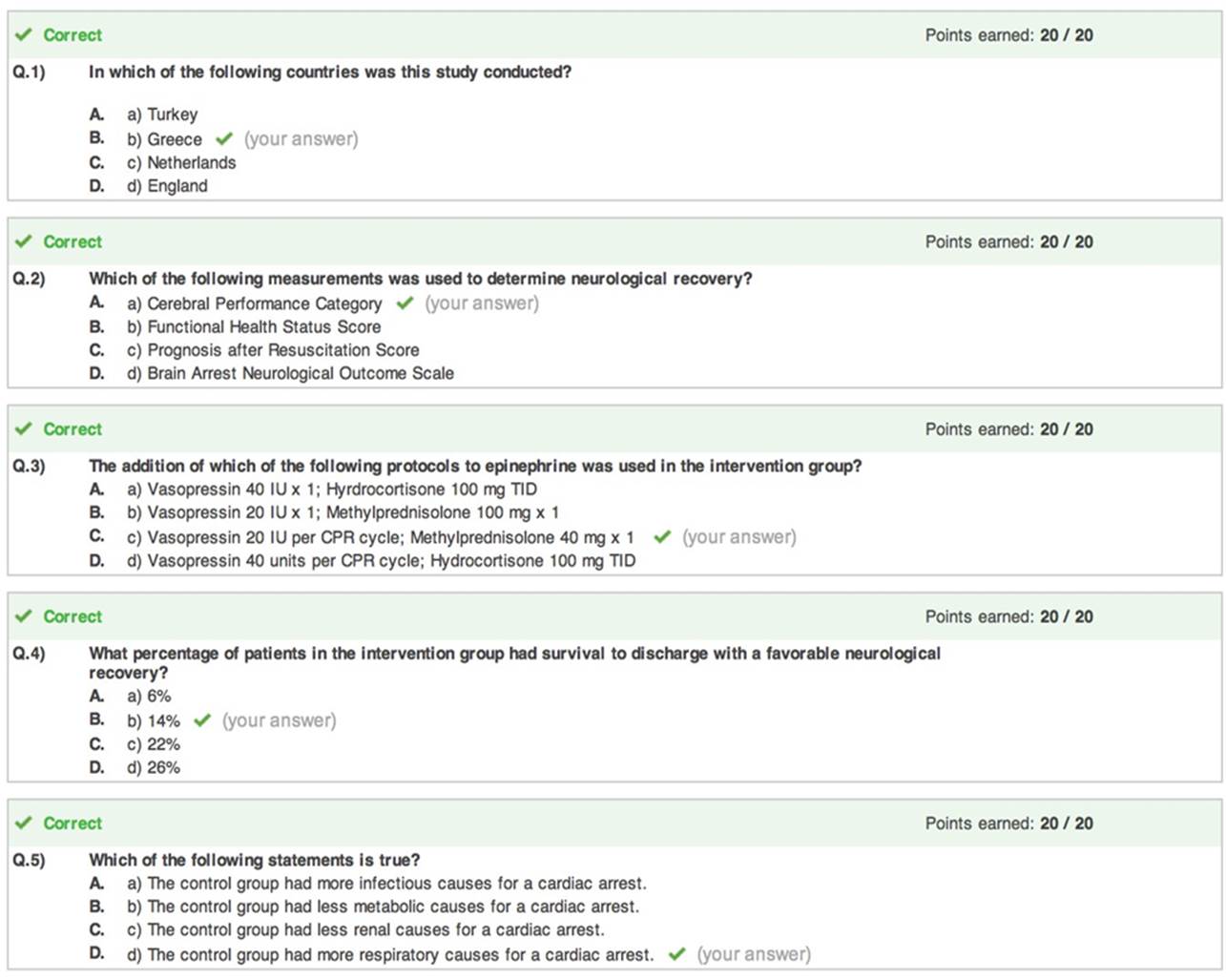Columbia University
New York, NY
Program Director: Vivek Moitra, MD
Type of Program: Critical Care Medicine
Abstract Authors: Vivek Moitra MD, Alan Gaffney MD, Rima Rahal MD, Jack Louro MD, Jason Alexander MD, Daniela Darrah MD, May Hua MD
BACKGROUND
Journal club is an integral part of our critical care fellowship curriculum. In order to increase attendance and to promote interactive participation, we changed our journal club format from the “traditional classroom” approach to a “modified flipped classroom” approach. In the classic model of a flipped classroom, the student watches a video lecture (content acquisition is self-paced) prior to class. Classroom time is then dedicated to student-centered activities such as problem-based learning and inquiry-oriented strategies.1 In our modified approach, in lieu of a video lecture, the journal article to be discussed was read in advance and a short on-line quiz was completed prior to class. Our aim was to compare attendance rates at journal club between the years 2010 and 2014 and to survey responses (self-assessment of understanding of material prior to class, attentiveness during class, ability to re-teach after class, involvement during class and command of the subject matter at the end of class) of our fellowship group between “traditional classroom” classes and “modified flipped classroom” classes during 2014.
METHODS
The modified flipped classroom journal club curriculum design incorporated the following four activities:
Activity 1: Critical care faculty identification of key journal articles to be discussed throughout the year. Journal articles were then grouped by subject area. Core journal club faculty developed five questions for each article.
Activity 2: Five questions (in the form of a quiz) for each article were distributed to fellows one week prior to journal club via an online platform, ProProfs. This platform has the ability to track rates of participation and quiz performance (Figure 1).
Activity 3: Classroom activities focused on completing each section of a standardized journal article assessment form (downloaded from www.bestbets.org) by the group with the direction and help of a faculty member. The completed form for each session was transcribed by one member of the group and placed online (Appendix 1).
Activity 4: Fellows were encouraged to use the transcribed form to facilitate discussion of the article with residents and medical students.
The traditional classroom classes consisted of didactic lectures on echocardiography and ultrasonography.
To evaluate this novel method of conducting journal club, we compared attendance from the modified flipped journal club for the year 2014 to attendance from a traditional journal club from the year 2010 over the same months of the calendar year. We also distributed two surveys consisting of five questions rated on a five point Likert Scale (Appendix 2) to the fellows in 2014, asking them to evaluate the modified flipped journal club and a traditional classroom model. We compared these survey ratings using a Wilcoxon signed-rank test.
RESULTS
Our fellowship class included 55% males and 45% females. Ages ranged from 30-35 years. Attendance at journal club increased from a mean of 65% in 2010 to 100% in 2014. The total scores (highest possible = 25 points) for the survey of the modified flipped journal club ranged from 20 -25 points with a mean of 22 points. The total score for the traditional classroom echocardiography teaching ranged from 7-25 with a mean of 13 points. We used a Wilcoxon paired signed- rank test to individually compare the survey scores and found a mean of 10.78 points higher rating allotment to the Journal club survey across all questions (p< 0.05).
CONCLUSIONS
Our modified flipped journal club is an interactive method to teach journal articles. Implementation of this innovative educational curriculum has been associated with increased attendance, participation, and a reported understanding of information as well as a reported increased ability to re-teach material to residents and medical students.
REFERENCES
1. Prober CG, Khan S. Medical education reimagined: A call to action. Acad Med. 2013;88:1407–1410
Appendix 1
“Homework”: This is a sample of portions of what would be completed by every fellow during journal club.
Form accessed from www.bestbets.org
How do you rate this paper? 7/10
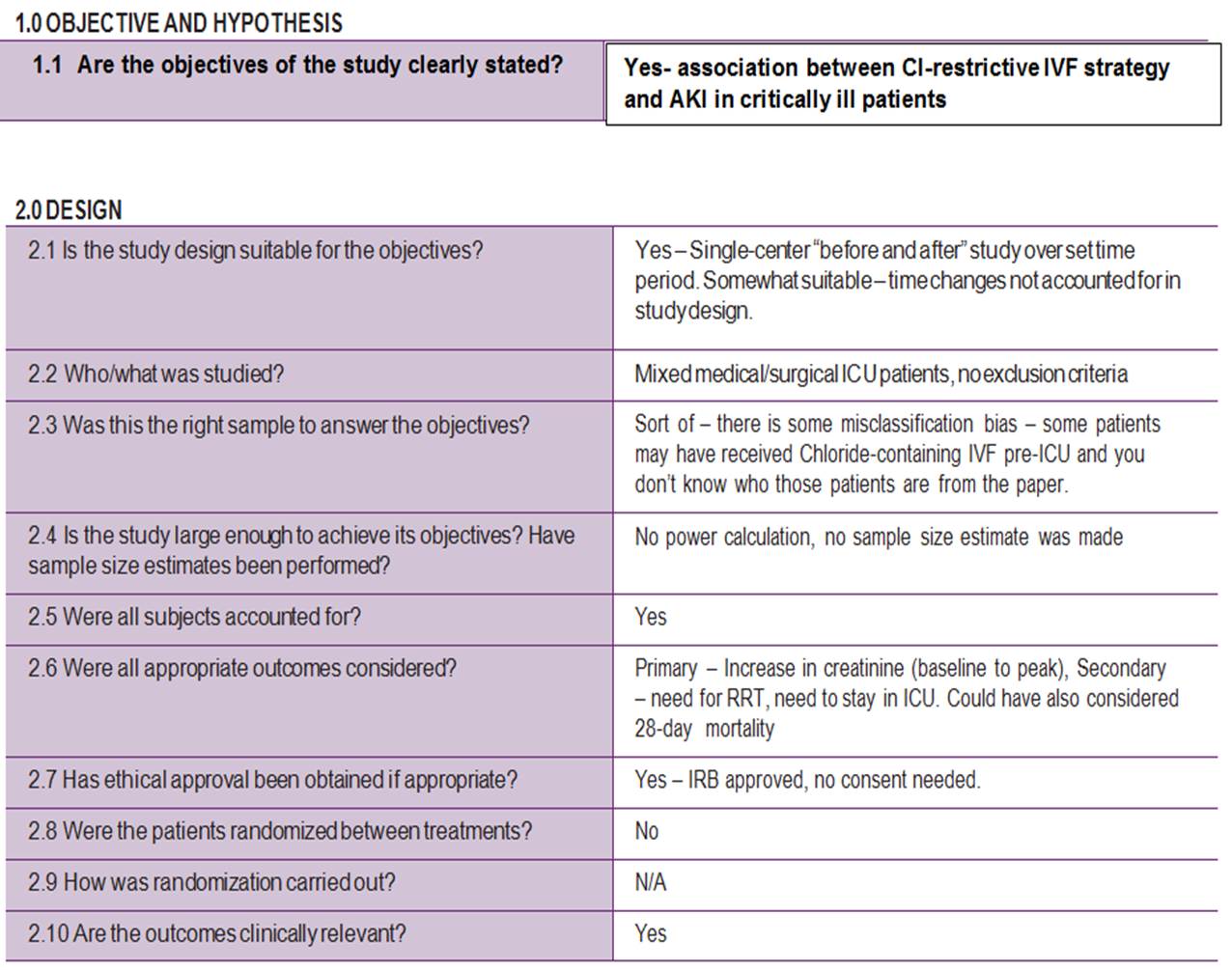
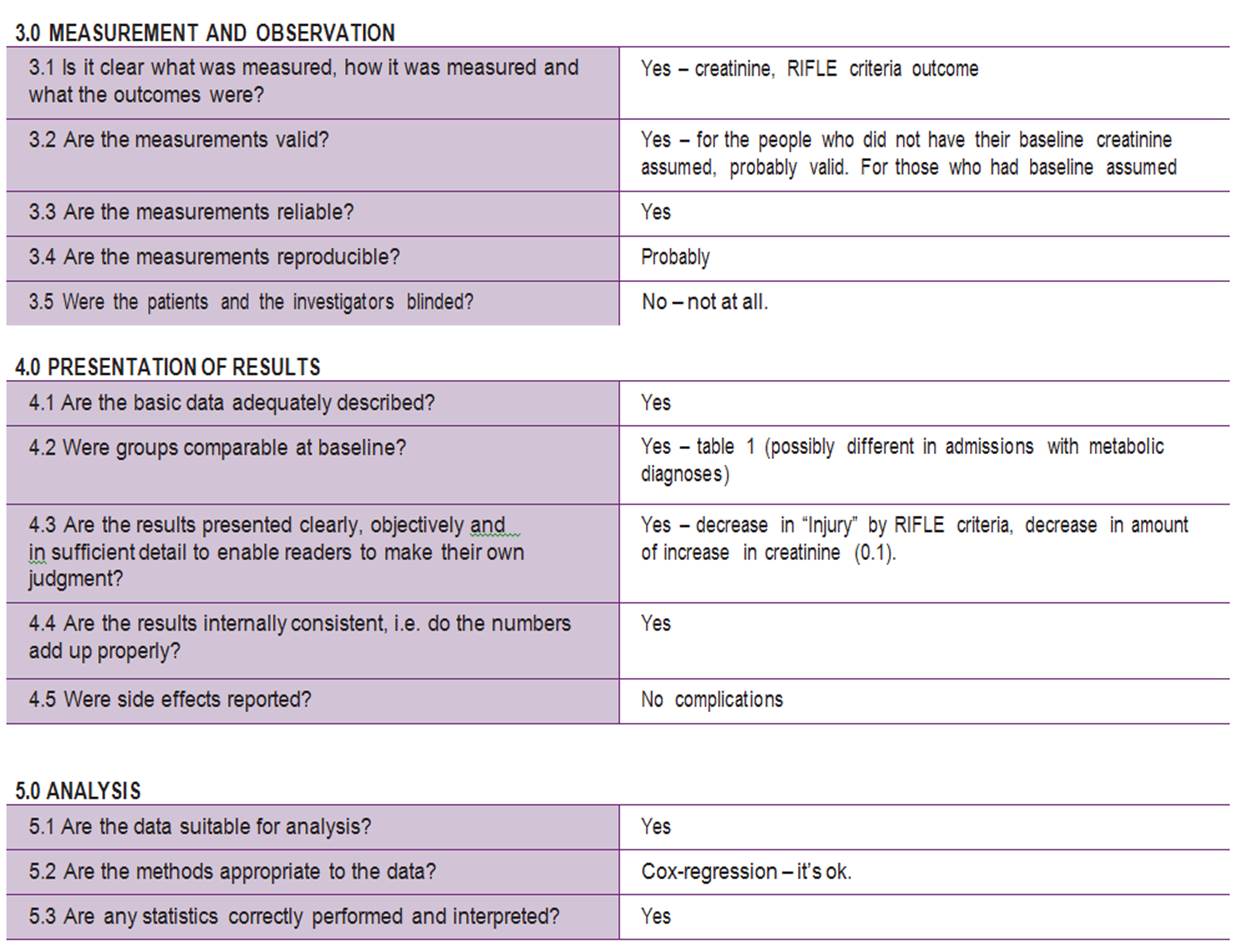
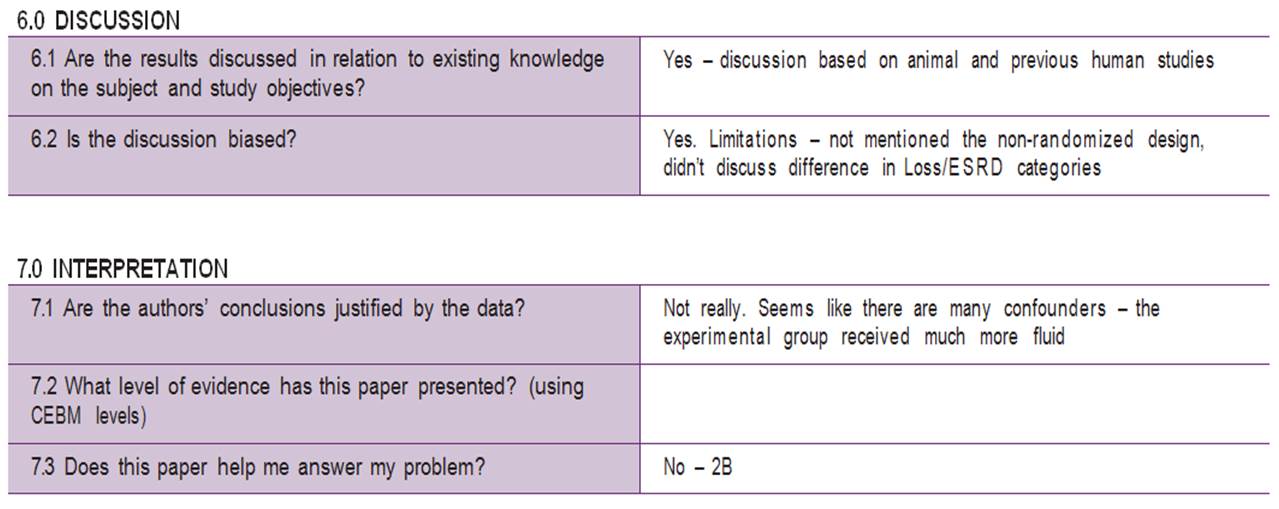
How do you rate this paper now? 7-8/10

Appendix 2
Survey
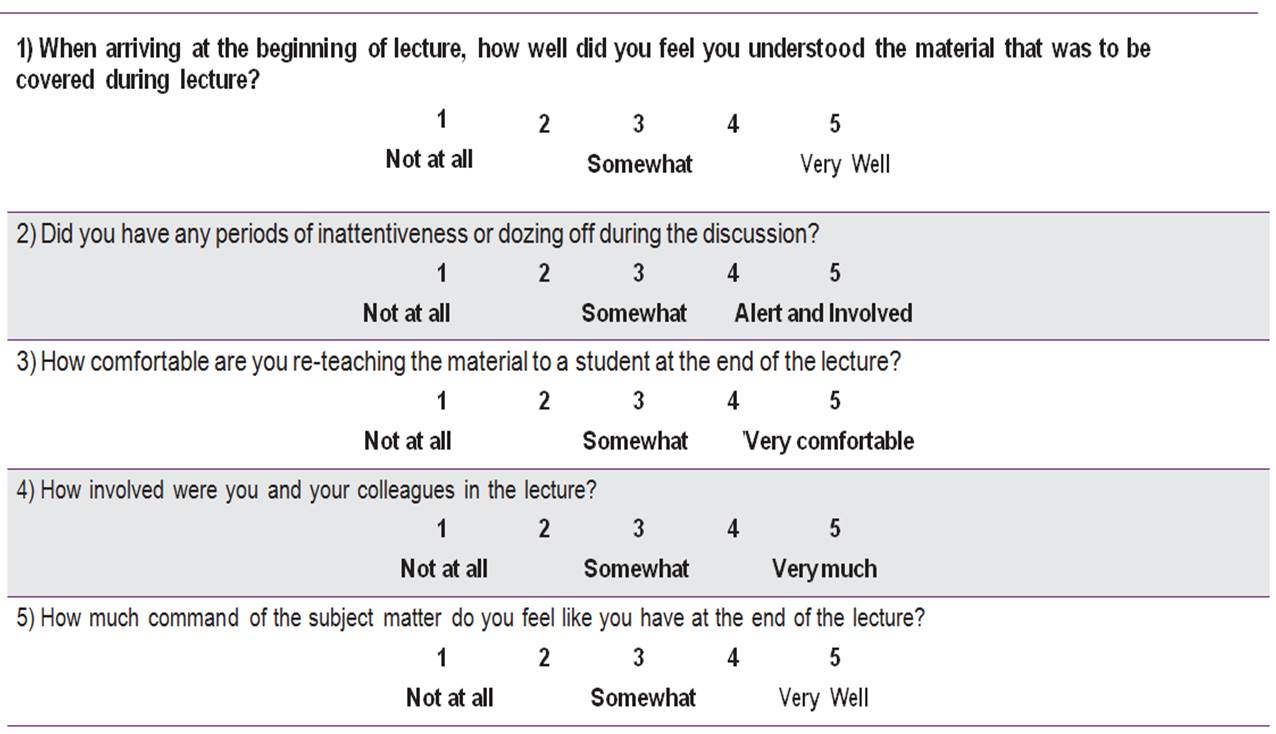
Figure 1
